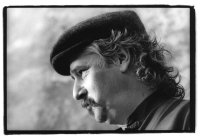Home > Modal music resource center > Modality, Brittany, Music

Up until the 1950s, traditional Breton music, which was essentially monodic, had very little contact with classical western harmony. Then, the introduction of equal temperaments in bombards and bagpipes in bagadoù, and subsequently the influence of the folk movement (through Irish music and rock) established the harmonic orchestration as the norm in Breton musical creation. The success brought about by this aesthetic choice should not make us forget the modal origins of this traditional music, which is still practiced today in its local forms such as the kan ha diskan, call and response singing, gwerzioù (lament) and “chant de haute voix” (a cappella), treujenn-gaol (clarinet) players, and instrumental duos (bombard-bagpipes).
In his book “La musique du nord de l’Inde” Alain Danielou pointed out a fundamental problem: “Recent attempts, in India and in other Middle-East countries, to write orchestral music that combines elements of counterpoint and polyphony with modal forms derive from poor understanding of what makes modal music such a unique means of expression.” This problem posed by the orchestration of Eastern modal music has also been encountered in Breton musical tradition.
We do not deny that harmony brought much creativity in Breton music. We do believe, however, that today it is necessary to rethink ensemble playing, using the founding musical systems of our traditional music.
In 1983, Thierry “Titi” Robin and Erik Marchand began to analyze the role of temperament in traditional music*. Their study, which has not yet been published, has revealed the existence of specific scales in the Breton repertoire, characterized by the use of three-quarter tones. The researchers conducted their analysis using their own equipment, as well as the instruments provided by the CNET (Lannion) and the IRCAM (Paris).
This is how the researchers summarized their project: “The driving motivation behind our initiative comes from the certainty that the temperaments (the structure of the musical edifice) which are specific to a particular repertoire are themselves an essential part – in the true sense of the term – of the musical message, its expressive power and its specificity. Cataloguing this basic “vocabulary” will inevitably enrich the performance of singers, composers and music teachers. The goal is as follows: to allow for a formal evolution of music interpretation and of the repertoire, an evolution whose driving force and laws would be grounded in its own cultural roots.
As a practical point, this research gave birth to two creative albums, which received the support of Dastum, the UPCP and the AMTA, as well as financial assistance from the Regional Council of Brittany and the Ministry of Culture.
Erik Marchand and Thierry Robin: “An heñchoù treuz” (Ocora, 1990) and Erik Marchand Trio: “An Tri Breur” (Silex-Auvidis, 1991).
In his album KAN (BMG, 2000) Erik Marchand emphasizes the modes common to Breton, Galician and Malian monody and Albanian polyphony, as well as, to a lesser extent, Sardinian polyphony. These vocal expressions use elements of non-equal temperament.
The growing interest in world music has made it possible to introduce European audiences to traditional music orchestras composed of numerous participants, singers or instrumentalists, and a diversified instrumentation. Among such performers, we can mention Nusrat Fateh Ali Khan, Alem Kasimov, the Zanzibar Tarab and all nuba orchestras from North Africa, as well as Arab-Andalusian music orchestras, and the late singer Oum Kalthoum.
It is our belief that there is today a need to form a large Breton orchestra that could answer the fascinating challenge of reviving the modal tradition of our region. The purpose of such an orchestra would also be to provide young Breton musicians with a musical culture that is often neglected in formal and community-based education.
We deem it imperative that the subsequent graduates of Kreizh Breizh Akademi be allowed to become instructors in modality and other particularities of Breton music. Some of these instructors may also be eligible to take over the management of future orchestras.
On the other hand, we believe it would be useful to allow students or musicians wishing to work with modal music to have the possibility of studying this particular aspect of Breton music. This will ensure the continuation of this work, and will confirm the academic concept.
Text written by Erik Marchand